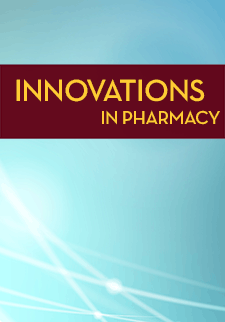Pharmacokinetic Analysis of Meropenem and Piperacillin in Critically-Ill Patients Requiring Continuous Ven-Venous Hemodiafiltration
Brandon Ferlas
Kristina Nelson
Milind Junghare
Kimberly Boeser
DOI: https://doi.org/10.24926/iip.v6i2.386
Keywords: pharmacokinetics, critical care, dialysis, CRRT, CVVHDF
Abstract
Background: Literature has demonstrated proper antibiotic selection and prompt initiation of antibiotics are associated with lower morbidity and mortality. Septic patients have altered pharmacokinetics and often require continuous renal replacement therapy which contributes to altered drug clearance and metabolism. The current study evaluates the pharmacokinetics of meropenem and piperacillin/tazobactam in critically-ill patients requiring continuous veno-venous hemodiafiltration.
Purpose: This observational, prospective, single-center, nonrandomized study evaluated the pharmacokinetics of meropenem and piperacillin/tazobactam in critically-ill patients requiring continuous veno-venous hemodiafiltration.
Methods: Plasma drug concentrations were determined via high-performance liquid chromatography using three post-dose blood samples after steady-state antimicrobial agent administration.
Results: Meropenem peak drug concentrations ranged from 35.9 to 61 mcg/mL, while trough concentrations ranged from 3.9 to 16.7 mcg/mL. Piperacillin peak drug concentrations ranged from 240 to 331.8 mcg/mL, while trough concentrations ranged from 152.7 to 194.9 mcg/mL. Both drugs examined displayed peak concentrations relatively consistent with those expected from the literature, but observed trough concentrations for meropenem and piperacillin were uniformly high.
Conclusions: Intravenous doses of meropenem and piperacillin result in peak drug concentrations similar to those previously reported and trough concentrations significantly greater than those in the literature. While concentrations above an organism’s MIC are desirable given the time-dependent nature of these beta-lactam antibiotics, decreased renal clearance of patients maintained on CVVHDF therapy while receiving higher doses of antimicrobials creates a situation in which drug accumulation and toxicity may occur. Given the complex nature of ICU patient care, increased pharmacovigilance and therapeutic drug monitoring are necessary in this unique population.
Type: Original Research


